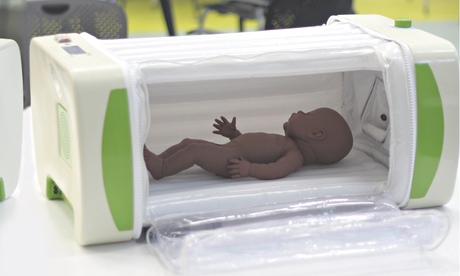
Entry to the 11th annual James Dyson award closed earlier this month after receiving submissions from more than 600 inventors worldwide. The competition rewards design and engineering students from 18 countries in Europe, North America, Asia and Oceania, awarding a cash prize to each national winner and a larger international prize – judged by Dyson himself – to the individual or team who wins overall. "The world is full of problems," says Dyson of the need to encourage new talent, "and only engineers and inventors can solve them."
This year's British jury comprises BBC journalist and engineer Steph McGovern; industrial designer Sir Kenneth Grange, whose work includes the InterCity 125 and the Royal Mail rural post box; and last year's UK winner Sam Etherington, who has been admitted into a UK engineering "hall of fame" for his multi-axis wave-power generator, beating Dyson in a public vote. The trio will have to sift through 80 strange and fascinating "solutions to everyday problems", including a cardboard bed and a mini kitchen bio-reactor for growing meat.
Already drawing attention among the British submissions is a cheap, collapsible incubator created by James Roberts, a product design graduate of Loughborough University. The device, designed to reduce infant mortality in refugee camps, belongs to the large contingent of submissions with a humanitarian purpose, and despite the awards' affiliation with the Dyson brand, most entries are not consumer products. Dyson believes inventors have a duty to pursue such global solutions: "It's vital that we do, and dwindling raw material supplies, rapidly rising energy costs, ageing populations and urban degradation will require new thinking entirely."
British entrants have also submitted dozens of ecological and medical innovations. Among them is a pressure-sensitive suit for athletes who lack physical sensation. Designed by a team from the Royal College of Art and Imperial College London, the material in the suit stains red in areas that undergo impact or a strain intense enough to denote injury, allowing the wearer to avoid further damage.
The national winners, each of whom receives £2,000, will be announced next month, and in November Dyson will select three finalists from a shortlist of 20 international entries. The two runners-up will receive £5,000 each while thewinner will be awarded £40,000, a quarter of which goes to their university department. "The costs of prototyping, testing and protecting designs quickly mount up," says Dyson, whose foundation has already awarded hundreds of thousands of pounds to budding inventors.
Perhaps unsurprisingly, British inventors have done well in the competition and won several times, most recently in 2012 with Dan Watson's innovative trawling net, which allows smaller fish to escape.
This year's British designers will have to beat some robust competition from abroad, however. Ruben Camerlynck of the University of Antwerp has submitted a disposable syringe designed to render obsolete the current techniques for "intradermal" vaccination, where the vaccine is administered into the skin rather than beneath it. German designer Philipp Hutfless offers a floating greenhouse he hopes will streamline the provision of vegetables to large coastal cities. Looking further afield, both in distance and eccentricity, the Malaysian entries include an invention to make cows more conspicuous at night and a complex gadget that finds the end of a roll of adhesive tape, while Adam Ben-Dror of New Zealand offers a contraption that allows bored or lonely goldfish "to roam freely on land" inside a tank with wheels.

